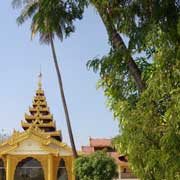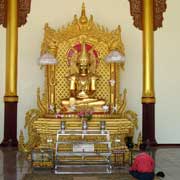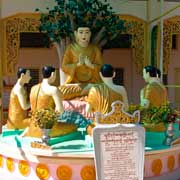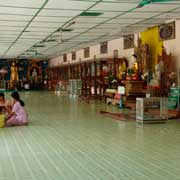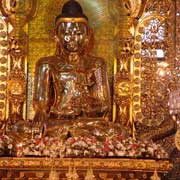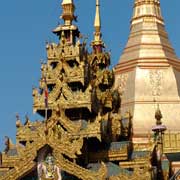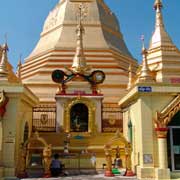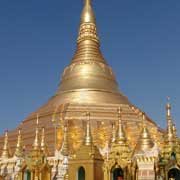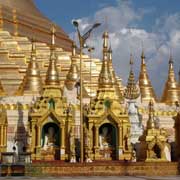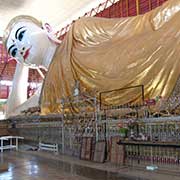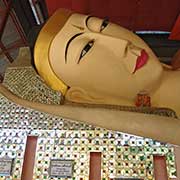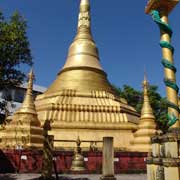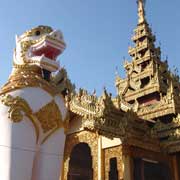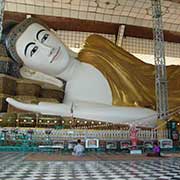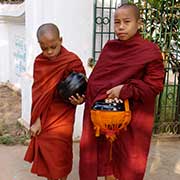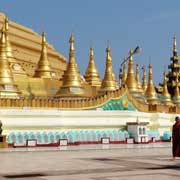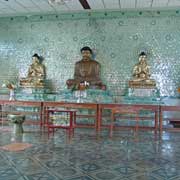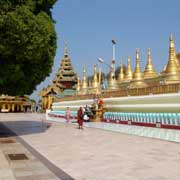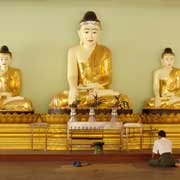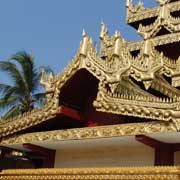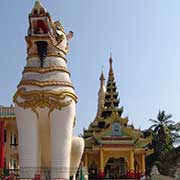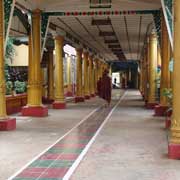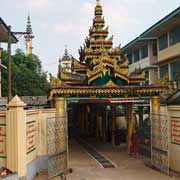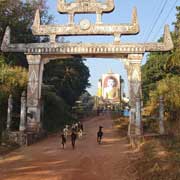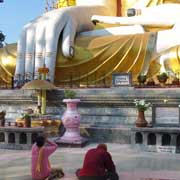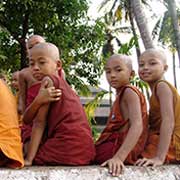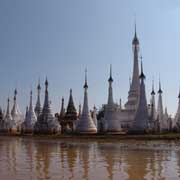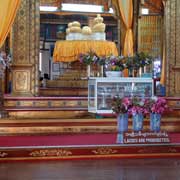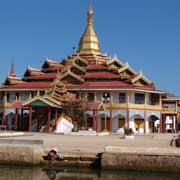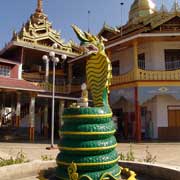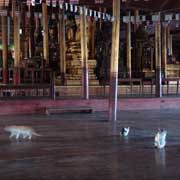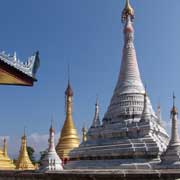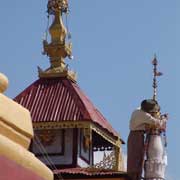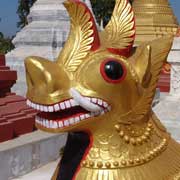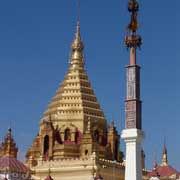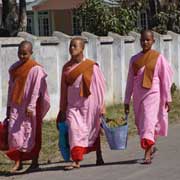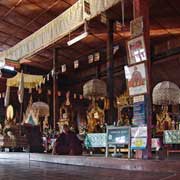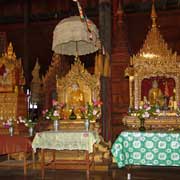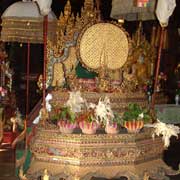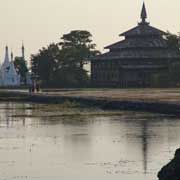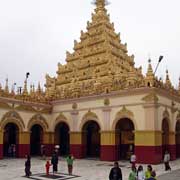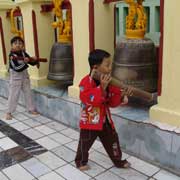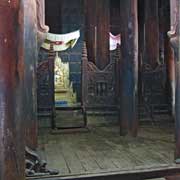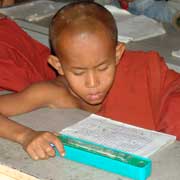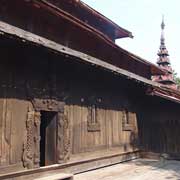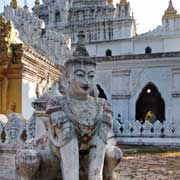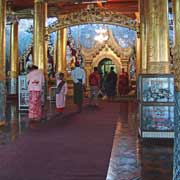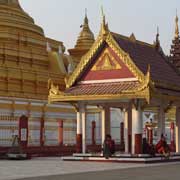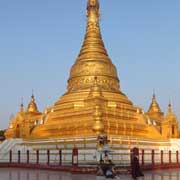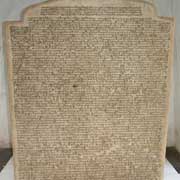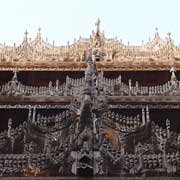Photos of Monasteries in Myanmar
Monasteries in Myanmar
Therevada Buddhism is practiced by around 88% of the population in Myanmar and was brought here, probably during the 3rd century BCE by missionaries, sent by the great Indian emperor Asoka.
you may then send it as a postcard if you wish.
The Mon were the first people practicing Buddhism and in the 9th century CE the Pyu of northern Myanmar were practicing a mixture of Therevada and Mahayana-Tantric Buddhism from the Tibetan plateau, where they came from. In the 11th century the Bamar King Anawratha of the Bagan Empire decided that only "pure" Therevada Buddhism should be practiced and this is now predominantly the case although it is often practiced together with nat worship, the placation of spirits that may intercede in worldly affairs.
Ordained Buddhist monks and nuns, who collectively are called "Sangha", are a respected and venerated part of society; young boys are expected to become a novice monk (samanera) between the ages of 10 and 20 for a time, participating in "shinbyu", the novitiation ceremony, a great honour for the family. This is usually performed when they are about seven years old and involves a procession and ceremony in which they change from princely clothes into those of an ascetic, like the historical Buddha, Siddharta Gautama. There are approximately half a million Buddhist monks and around 75,000 nuns in Myanmar and they can be seen with their alms bowls in the morning and late afternoon, giving opportunities to the people to earn merit by donating food. There are many Buddhist festivals, including the "Paya pwe", pagoda festivals, usually held when the moon is full.
There are thousands of monasteries and pagodas all over the country. The most iconic and most sacred is without doubt the Shwedagon Paya in Yangon but there are many more; Buddha statues, including huge reclining Buddhas, can be seen in many places: the 55 metre long and 16 metre high Shwethalyaung Buddha in Bago is the largest at the moment. There are also schools in monasteries where children are sent to receive a Buddhist education, as has been the tradition before secular schools were brought in by the British; in fact, the Burmese word for school, "kyaung" is derived from "hpongyi kyaung", monastery.




